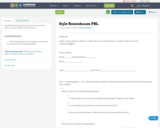
A problem based learning lesson and project on the topic of the post WWII economic boom.
- Subject:
- History
- Material Type:
- Lesson Plan
- Date Added:
- 02/27/2017

A problem based learning lesson and project on the topic of the post WWII economic boom.

Although antiwar organizations existed even before World War I, it was during the interwar period that pacifism became the fastest-growing movement in America. Numerous American politicians, businessmen, journalists, and activists made proposals for multilateral agreements on arms control and collective security. Through an examination of memoirs, photographs, and other primary source documents, students examine the rise of antiwar sentiment in the United States, as well as some of the concrete measures taken during the 1920s to prevent the outbreak of future wars.
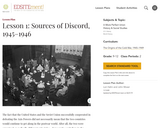
The fact that the United States and the Soviet Union successfully cooperated in defeating the Axis Powers did not necessarily mean that the two countries would continue to get along in the postwar world. This lesson will examine the U.S.-Soviet disagreements regarding Germany and Eastern Europe.
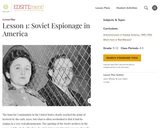
The hunt for Communists in the United States clearly reached the point of hysteria by the early 1950s, but what is often overlooked is that it had its origins in a very real phenomenon. This lesson will expose students to recently declassified FBI documents and transcripts of the Rosenberg trial. It will encourage them to think seriously about the extent of the Soviet espionage network in America, thus setting the stage for a proper understanding of later hearings by the House Un-American Activities Committee and Joseph McCarthy.
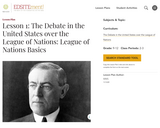
American foreign policy resonates with the same issues as the debate over U.S. entry into the League of Nations-collective security versus national sovereignty, idealism versus pragmatism, the responsibilities of powerful nations, the use of force to accomplish idealistic goals, the idea of America. Understanding the debate over the League and the consequences of its ultimate failure provides insight into international affairs in the years since the end of the Great War and beyond. In this lesson, students read the words and listen to the voices of some central participants in the debate over the League of Nations.
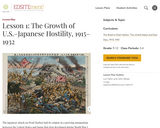
Using contemporary documents, students in this lesson explore the rise of animosity between the United States and Japan which began with Japan's "Twenty-One Demands" on China during World War I, and continued through the Manchurian Incident of 1931.
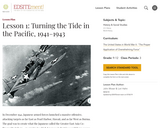
In December 1941, Japanese armed forces launched a massive offensive, attacking targets as far East as Pearl Harbor, Hawaii, and as far West as Burma. This lesson plan will focus on the overall strategies pursued by the Japanese and the Allies in the initial months of World War II in Asia and the Pacific.
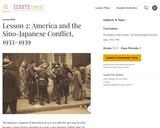
The Japanese conquest of Manchuria in 1931 was only the first step in what became a much larger campaign to create a pro-Japanese "buffer state" in North China. This lesson will examine the overall principles which underlay both Japanese and American foreign policy in the mid- to late-1930s.
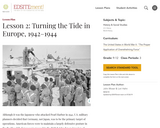
Although it was the Japanese who attacked Pearl Harbor in 1941, U.S. military planners decided that Germany, not Japan, was to be the primary target of operations. This lesson plan will focus on the overall strategies pursued by the Americans and their British allies in the initial months of World War II in Europe.
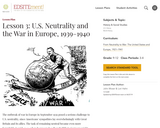
The outbreak of war in Europe in September 1939 posed a serious challenge to U.S. neutrality. On the one hand, Americans' sympathies lay overwhelmingly with Great Britain and its allies; on the other hand, public sentiment overwhelmingly favored staying out of the war. Through a study of contemporary documents, students learn about the difficult choices faced by the Roosevelt administration during the first fifteen months of World War II, culminating in the decision to provide direct military aid to Great Britain.
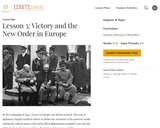
By the beginning of 1944, victory in Europe was all but assured. The task of diplomacy largely involved efforts to define the structure of the postwar world. Why and how did the United States attempt to preserve the Grand Alliance as American diplomats addressed European issues?
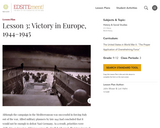
Although the campaign in the Mediterranean was successful in forcing Italy out of the war, Allied military planners by late 1943 had concluded that it would not be enough to defeat Nazi Germany. This lesson plan will focus on the overall strategy pursued by the Allies in the final months of World War II in Europe.
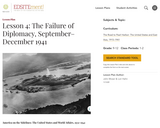
Faced with crippling economic sanctions imposed by the United States, the Japanese government decided in September 1941 to prepare for war to seize the raw materials that they were now unable to obtain from America. Students in this lesson will put themselves in the shoes of U.S. and Japanese diplomats in the final months of 1941.
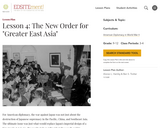
For American diplomacy, the war against Japan was not just about the destruction of Japanese supremacy in the Pacific, China, and Southeast Asia. The ultimate issue was just what would replace Japan's imperial design of a "Greater East Asia Co-Prosperity Sphere." This lesson plan focuses on two major postwar problems"”the future of China and (using French Indochina as a test case) the future of Western imperialism in Southeast Asia.
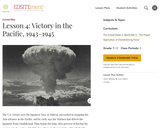
The U.S. victory over the Japanese Navy at Midway succeeded in stopping the Axis advance in the Pacific, and by early 1943 the Marines had driven the Japanese from Guadalcanal. This lesson will guide students through the military campaigns of the Pacific theater, tracing the path of the Allied offensives.

As a young man, Takashi Hoshizaki was imprisoned on McNeil Island, Washington in 1944 for resisting the draft for World War II. His resistance was part of a broader legal battle for the civil rights of over 120,000 Japanese Americans, including Takashi's family, imprisoned in American concentration camps. This lesson includes a 7-minute introduction video, lesson plan notes, activities, vocabulary, and educator resources.
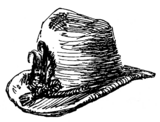
The stories for this unit are about Holocaust camp guest-speaker experiences in the death camps during World War II. When making their presentations to high school students, most survivors were not able to stand for any length of time to make their presentations about their experiences because of their weakened physical condition. Moreover, in the late nineteen nineties, many were so old they had difficulty accurately recounting their camp experiences. When taken to lunch, Holocaust camp survivors ate only a special diet of soft foods because their digestive systems suffered massive damage from their daily two-hundred-calorie or less concentration camp food. On the presentation day, survivors made no more than one presentation due to the emotional hardships recounting their stories placed on them every time they told their stories. Their accounts of what they endured in the death camps inspired the author to write two fictional short stories.
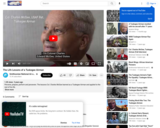
Perceive, prepare, perform and persevere. The lessons Col. Charles McGee learned as a Tuskegee Airman and applied to the rest of his life.
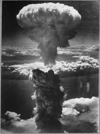
Allow your students to relive December 7, 1941 and react to the attack on Pearl Harbor. They will hear first hand accounts from survivors and experience what it was like to be there that day. Further, let them shape their own opinions about the roles Japan and the United States played in the war, and empathize with those left in the atomic aftermath.
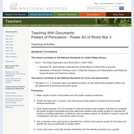
This site provides a standards-based lesson on how the use of posters during WWII helped win over the hearts and minds of the American people.